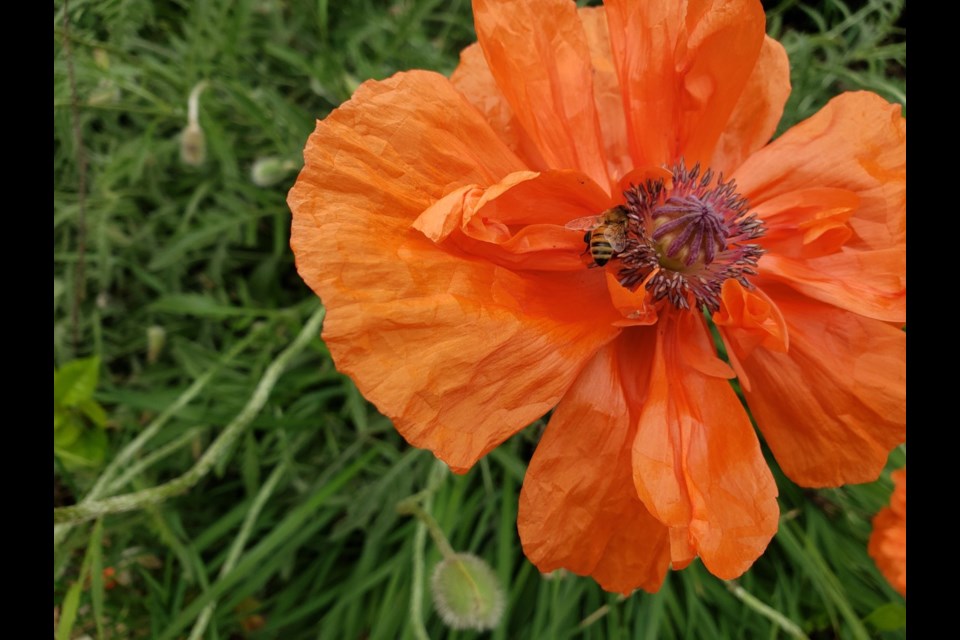This time of year any plants growing in the garden are welcome! Those plants that come back year after year are especially welcome! Enjoying annuals that will set their seed and come back year after year have a special appeal, although they need a bit different culture than the other more regular "perennials".
Self-seeding annuals are exactly what is needed in some areas of the garden. They are also a huge benefit if you are planting a pollinator garden. Not all annuals are self-seeding, but if the seed packet says “self-sows freely” or “Hardy Annual”, chances are that it will. Soil conditions and climate determine what will self-seed. For example, late-blooming annuals such as zinnias may not have time to set seed and mature before frost. Furthermore, not all annuals will grow true from seed or in other words, look exactly like their parents. To get exact replicas, you need open-pollinated or heirloom seeds. If the annual in question is one of the many hybrids now available, the offspring revert to the original parent colours. In my garden, the mauves, blues and whites, of the original packet of bachelor buttons have almost entirely gone back to the “cornflower blue” of the original plant.
When I plant new annuals in my garden I sometimes plant them after the first hard frost in late fall but more often don’t remember to plant them until spring, usually several weeks before the last frost date. It is obvious, but to self-seed, there must be a seed. So don’t deadhead right up to frost. Mid-august usually allows enough time for the last flowers to set seed and mature. And while plants are designed to seed themselves, I sometimes shake poppy seed heads in new corners of the garden or sprinkle a handful of bachelor button seed heads where I feel more colour is needed.
In spring, watch for the new seedlings poking their heads up from the ground. And watch that spade because it is easy to wipe out the new flowers along with the ubiquitous weeds. However, you may also quickly discover that there are far more seedlings than you want or they are about to strangle out something else. The simple remedy is to thin them out. Choose the largest, sturdiest seedlings and remove the rest, sometimes transplanting to newly chosen spots. It is easy to do with small seedlings - a trowel-full of dirt with the seedling in the middle and most of them don’t notice they’ve been moved.
Shirley poppies (Papaver rhoeas) self-seed profusely and they come in many shades of pink and red, singles and doubles. Calendula officinalis or pot marigolds have daisy-shaped flowers of orange, rust, yellow, cream, and apricot. They love the sun and good drainage. Expect them to revert, over time, to simpler forms and fewer colours. Sunflowers will pop up in places you didn’t expect and sometimes leaving one or two in an unlikely spot creates a relaxing informality. California poppies (Eschscholzia californica), Oriental poppies (Papaver orientale), johnny jump-ups (Viola cornuta), sweet William (Dianthus barbatus), love-in-a-mist (Nigella damascena), forget-me- nots (Myosotis sylvatica) will all weave their way through your garden without consultation.
Self-seeding annuals are undemanding and reliable. The problem is that you have little idea and less control over where they will turn up. Depending on your point of view, they help to create an unfussy, relaxed, cottage garden with new surprises each spring. Or they create disasters which need immediate help. If you are ready to let go of some (or most) of the control in your garden, then welcome to the world of self-seeding annuals.
Hanbidge is the Lead Horticulturist with Orchid Horticulture. Find us at www.orchidhort.com; by email at [email protected]; on Facebook @orchidhort and Instagram at #orchidhort.
Tune into GROW Live on our Facebook page https://www.facebook.com/orchidhort or check out the Youtube channel GROW https://www.youtube.com/channel/UCzkiUpkvyv2e2HCQlFl0JyQ?




